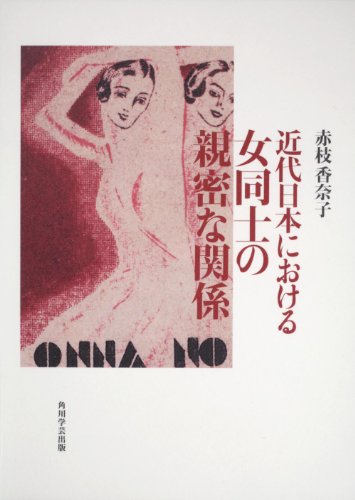10 0 0 0 OA 近代日本の女同士の親密な関係をめぐる一考察 : 『番紅花』をいとぐちに
- 著者
- 赤枝 香奈子
- 出版者
- 京都大学
- 雑誌
- 京都社会学年報 : KJS
- 巻号頁・発行日
- vol.10, pp.83-100, 2002-12-25
Recent studies on sexuality have deconstructed `Seiai' (or romantic love) on an analytical basis that treats sexuality and love separately, focusing mainly on the former. Homosexuality has also become a common subject in contemporary sexuality studies. In this paper, I investigate intimate relationships between women of modern Japan, including those containing lesbianism. However I do not discuss such relationships as a matter of general sexuality, as the reality of the relationships shared among women of the day is not yet well known. IVIale homosexuality in modern Japan has been made considerably clear. On the other hand, we do not yet know how the concept of lesbianism in modern Japan was formed, how it functioned, and what types of relationships were associated with it. In this paper, I examine discourses about intimate relationships between women from the end of the Meiji era to the beginning of the Taisho era. I discuss what types of relationships are indicated and that the discourses between these women are really over sexuality. At the beginning of the investigation, I look at some close relationships between women described in the journal Safuran. Safuran was founded by I~azue Otake, a member of an earlier journal called Seito. Seito and its leading figure Raicho Hiratsuka were oriented towards heterosexuality. We cannot define the close relationships found in Safuran simply as the same as the homosexual relationships found today. I argue that the process of building relationships was understood as something sexual in accordance to their reference to western sexology. The discourses in the period mentioned above pay much attention to intimate relationships between women. A double suicide committed by two graduates of a girl's school pulled the trigger. People came to call such relationships `Dousei-no Ai' (love between two people of the same gender), and tended to recognize it as a matter of sexual desire. Nevertheless, it was `excessively-radical friendships' that gained more attention within the discourses. In other words, when criticizing women's homosexuality, authorized commentators were eager to classify friendship under the dichotomy of normaUabnormal, while the topic of sexuality was disregarded. What they then put stress on was to mould women in socially acceptable oriented affection.
- 著者
- [研究代表] 赤枝香奈子
- 出版者
- 京都大学グローバルCOE「親密圏と公共圏の再編成をめざすアジア拠点」
- 巻号頁・発行日
- 2010
8 0 0 0 近代日本における女同士の親密な関係
- 著者
- 赤枝香奈子著
- 出版者
- 角川グループパブリッシング (発売)
- 巻号頁・発行日
- 2011
- 著者
- 赤枝 香奈子
- 出版者
- 日本社会学会
- 雑誌
- 社会学評論 (ISSN:00215414)
- 巻号頁・発行日
- vol.56, no.1, pp.129-146, 2005-06-30
同性間の親密な関係は, しばしば「同性愛/友情」という二項対立的な図式によって解釈される.しかし女性同士の親密性については, 従来, その分類が曖昧であるとされ, 同性愛と友情が連続的であるのみならず, 母性愛とも連続性をもつものとみなされてきた.<BR>公的領域と私的領域の分離に基づく近代社会において, 親密性は私的領域に属する事柄とされる.そして性・愛・結婚を三位一体とする「ロマンティック・ラブ・イデオロギー」によって, 私的領域は形成されてきたと言われる.しかし, 母性愛と女性同士の友情や愛情は, 必ずしも親和的ではなかった.それはロマンティック・ラブの核心に位置するとされる, 生殖から解放された「自由に塑型できるセクシュアリティ」 (A.ギデンズ) を志向するかどうかという違いに端的に表される.近代日本の女学校において見られた女性同士の親密な関係は, しばしば「安全な」友情か「危険な」同性愛に分断され論じられてきたが, 現在から振り返った場合, 彼女たちの親密な関係は, まさしくロマンティック・ラブの実践であったといえる.そのような親密性は, 女学校において実践される限りは, 健全な成長の一段階としてみなされたが, ひとたび女学校の外へ出ると, 「異常」のレッテルを貼られ, 「母」とは対照的に位置づけられ, スティグマ化された独身女性の表象である「老嬢」と結びつけられ, 貶められた.
5 0 0 0 戦前期同性愛関連文献集成
- 著者
- 古川誠 赤枝香奈子編・解説
- 出版者
- 不二出版
- 巻号頁・発行日
- 2006
2 0 0 0 OA 赤枝香奈子著 『近代日本における女同士の親密な関係』
- 著者
- 赤枝 香奈子
- 出版者
- 九州歴史科学研究会
- 雑誌
- 九州歴史科学 (ISSN:13455761)
- 巻号頁・発行日
- no.46, pp.72-83, 2018-12
- 著者
- 赤枝 香奈子
- 出版者
- 日本社会学会
- 雑誌
- 社会学評論 (ISSN:00215414)
- 巻号頁・発行日
- vol.56, no.1, pp.129-146, 2005-06-30
同性間の親密な関係は, しばしば「同性愛/友情」という二項対立的な図式によって解釈される.しかし女性同士の親密性については, 従来, その分類が曖昧であるとされ, 同性愛と友情が連続的であるのみならず, 母性愛とも連続性をもつものとみなされてきた.<BR>公的領域と私的領域の分離に基づく近代社会において, 親密性は私的領域に属する事柄とされる.そして性・愛・結婚を三位一体とする「ロマンティック・ラブ・イデオロギー」によって, 私的領域は形成されてきたと言われる.しかし, 母性愛と女性同士の友情や愛情は, 必ずしも親和的ではなかった.それはロマンティック・ラブの核心に位置するとされる, 生殖から解放された「自由に塑型できるセクシュアリティ」 (A.ギデンズ) を志向するかどうかという違いに端的に表される.近代日本の女学校において見られた女性同士の親密な関係は, しばしば「安全な」友情か「危険な」同性愛に分断され論じられてきたが, 現在から振り返った場合, 彼女たちの親密な関係は, まさしくロマンティック・ラブの実践であったといえる.そのような親密性は, 女学校において実践される限りは, 健全な成長の一段階としてみなされたが, ひとたび女学校の外へ出ると, 「異常」のレッテルを貼られ, 「母」とは対照的に位置づけられ, スティグマ化された独身女性の表象である「老嬢」と結びつけられ, 貶められた.



